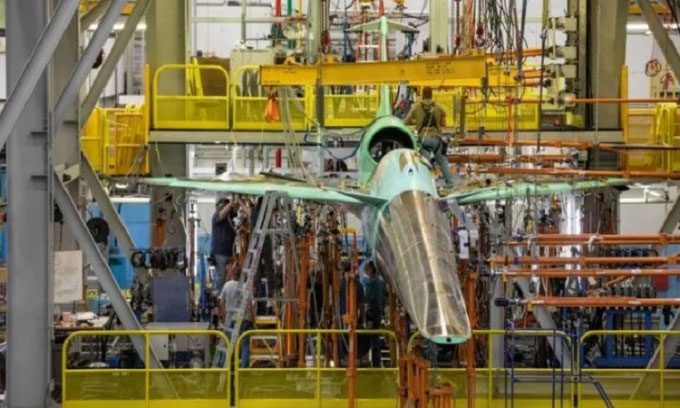Engineers are taking advantage of available equipment at the facility in Texas to complete structural testing for the X-59 supersonic aircraft.

X-59 aircraft at Lockheed Martin facility in Fort Worth, Texas. (Photo: Lockheed Martin)
The ultra-quiet supersonic aircraft, designed and built by the National Aeronautics and Space Administration (NASA), has been moved to Texas for critical structural testing ahead of its first flight scheduled for later this year. The X-59 was transported between Lockheed Martin facilities at the end of December 2021. This relocation between Palmdale, California, and Fort Worth, Texas, allows the team to utilize specialized equipment available at the Texas facility to ensure the aircraft does not experience excessive stress in the air.
“Designing and building the aircraft from scratch in Palmdale is very costly and time-consuming,” said Mike Buonanno, an aerospace engineer at Lockheed Martin and the X-59 development team lead, on February 11. “In Fort Worth, they have the perfect facility with a fully equipped control room and all the necessary support equipment to conduct effective testing.”
Supersonic aircraft travel very quickly through the air, but a major limitation is the noise and vibrations they produce. The sonic boom generated when an aircraft exceeds the speed of sound creates a loud noise, shattering windows and causing various damages to buildings below. For instance, the sonic boom from the famous Concorde aircraft, which was retired in 2003, reached up to 105 decibels, comparable to the sound of thunder. NASA is working to develop fast-flying vehicles that do not exert environmental pressure. According to NASA, the X-59 will not be louder than a door slamming from approximately 6 meters away.
In Texas, engineers will calibrate sensors to better understand the pressure on the aircraft’s structure during flight. They will compare the results with computer models that predict the X-59’s performance and must be particularly careful as this is a prototype of an expensive system.
The program completed 80% of its structural testing by the last week of January 2022, and everything is progressing well. NASA has not announced a timeline for completing the tests, but next, engineers will adjust the fuel tank before returning the X-59 to Palmdale to assemble the remaining systems. The first flight is expected to take place at the end of 2022 in the California desert.





















































